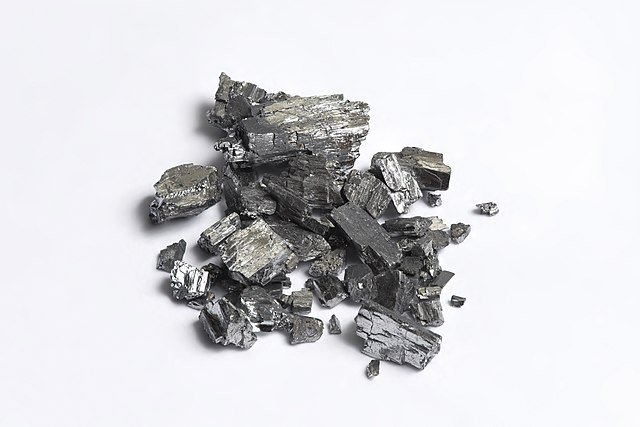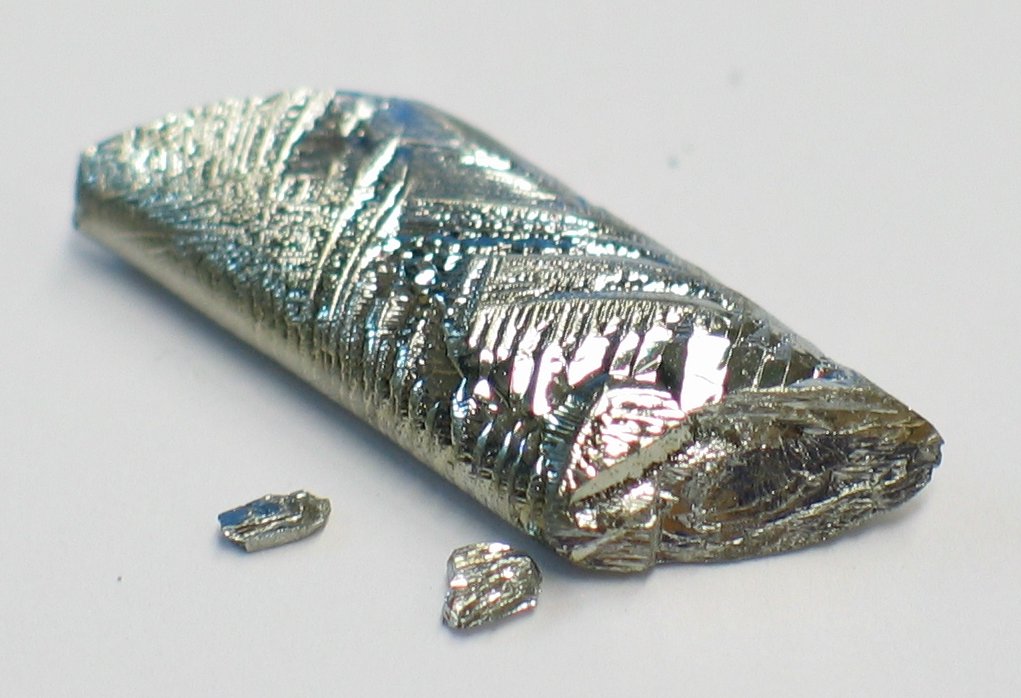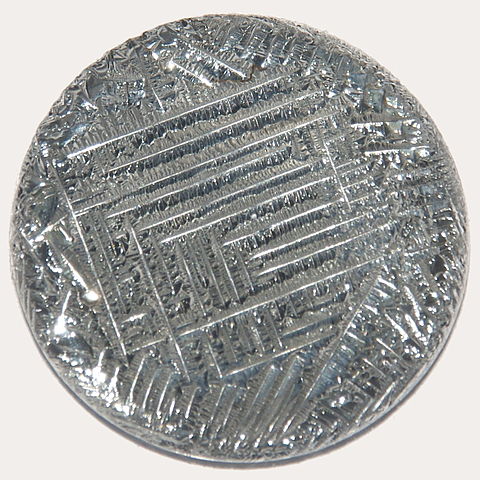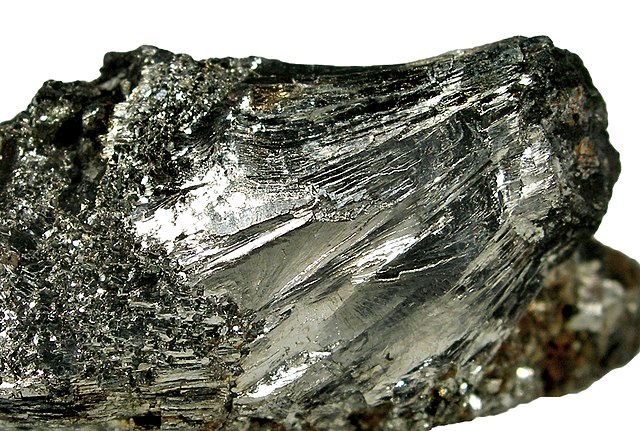Tellurium is a rare chemical element with unique properties that make it a valuable resource in modern society. Discovered in 1782 by the chemist Franz Joseph Muller von Reichenstein, Tellurium remains one of the least abundant elements in the periodic table today.
This article will cover the unique properties of Tellurium and its various applications, as well as its sources and potential environmental impacts.
Introduction
Within the realm of chemical elements, Tellurium is classified as a non-metal. Its atomic weight is 127.6 g/mol, and it has a position in the periodic table at atomic number 52. This rare element is often compared to sulfur, selenium, and polonium due to its similarities in physical and chemical properties.
Tellurium is a silvery, brittle solid at room temperature. Its melting point is 722.66 degrees Celsius and its boiling point is 1,261 degrees Celsius. Its density is 6.24 g/cm3, and its electrical properties consist of a low electrical conductivity and high thermal conductivity.
Since its discovery, Tellurium has been used in a variety of industries. One of the most prominent applications of Tellurium is in electronics, particularly in cadmium telluride solar cells. Tellurium is also useful in metallurgy, as it strengthens and improves the properties of copper and stainless steel. Additionally, it is used in chemical production as a catalyst for manufacturing various compounds.

Despite its various uses, Tellurium remains a rare element and is mined from only a few select locations in the world. It is primarily extracted from copper and lead ore deposits and is synthesized in very limited quantities. The cost of Tellurium in the market depends on the amount of demand for the element and is usually quite expensive.
Tellurium is known to be toxic and is therefore subject to various regulations when used in industry. Potential health hazards associated with Tellurium include various respiratory and dermatological complaints. It is recommended that individuals who work with Tellurium wear protective clothing and use adequate ventilation, as exposure to the elements can cause adverse effects.
In conclusion, Tellurium is a rare element with unique properties that make it invaluable in many industries. Its physical and chemical properties make it a valuable resource in electronics, metallurgy, and chemical production. Despite its scarcity, its various applications necessitate its mining and synthesization.
It is important to be aware of the toxicity of Tellurium and to take the necessary precautions when working with the element.
Understanding the unique properties of Tellurium is essential to utilize this element to its fullest potential.
Chemical Properties
Atomic weight is an important parameter used to determine the chemical properties of any element. Tellurium has an atomic weight of 127.6, which places it in the category of non-metals. It is found in Group 16 (VIA) of the periodic table, and has the atomic number 52.
Tellurium is a brittle, silver-white solid at room temperature. Its melting point is 449°C, and its boiling point is 988°C, making it a relatively low-temperature element. It is also relatively dense, with a density of 6.24 g/cm3. Its electrical properties include a low resistivity and a high electron work function, which make it an excellent conductor of electricity.
Tellurium is an unusually stable element. It is resistant to oxidation and corrosion, and is not affected by acids, bases, or salt solutions. It is also highly stable at high temperatures, making it ideal for use in many industrial applications.
Tellurium is also unique in that it is the only element in its group that can form stable compounds with other elements. It can form compounds with the halogens, as well as sulfur, nitrogen, and carbon. These compounds are often used as catalysts or oxidizing agents in various industrial processes.
In addition, Tellurium is also an important catalyst in the production of drugs and other pharmaceuticals. It is used to catalyze chemical reactions, such as the synthesis of polymers, and is also essential in the production of certain antibiotics. It is also used as a catalyst in the production of organic chemicals, including plastics, rubber, and dyes.
Physical Properties
Tellurium belongs to the chemical element group, and it is a rare element. It has a wealth of unique physical properties that makes it desirable for certain applications.
The atomic weight of Tellurium is 127.6 amu, and it is classified as a non-metal. It is located in group 16 and period 5 of the periodic table.
Tellurium has a silver-white metallic luster, and its appearance can range from yellow to red. Its melting point is 449.51 °C, and its boiling point is 990 °C. It has a density of 6.24 g/cm3 at room temperature, and its electrical resistivity is 8.7×10-6 Ωm.
The physical properties of Tellurium make it highly desirable in certain applications due to its unique characteristics. For example, it is a very good conductor of electricity and heat, which makes it ideal for the electronics and metallurgy industries. Additionally, Tellurium can withstand extremely high temperatures, which makes it an ideal component in the chemical production industry.

Furthermore, Tellurium has a low vapor pressure, making it an ideal material for manufacturing corrosion-resistant alloys, as well as for use in catalysts and pigments. Finally, Tellurium is very stable in air, which makes it a useful material in the production of filaments and light bulbs.
In conclusion, Tellurium has a wealth of unique physical properties, which makes it a desirable material in a variety of industries. Its atomic weight, classification as a non-metal, and position in the periodic table are all important characteristics.
Additionally, its electrical properties, low vapor pressure, and stability in air make it an ideal material for the electronics, metallurgy, and chemical production industries.
Applications of Tellurium
Tellurium is widely used in many sectors due to its unique properties and composition. It is a relatively rare element, but offers many industrial and commercial advantages over other elements.
Its ability to form a number of alloys and its low toxicity makes it an attractive choice for many industries.
Uses of Tellurium in Electronics:
Tellurium is an important component in the electronics industry. It is used to produce semiconductors, which are essential components of electronic devices such as computers, cell phones, and other consumer products.
Tellurium is also used in the manufacture of transistors, which are commonly used in electronic circuits.
Uses of Tellurium in Metallurgy:
Tellurium is an important element in the production of steel and other metals. Tellurium-containing alloys are particularly durable and resistant to corrosion, making them ideal for use in machinery and other industrial applications.
Its ability to form alloys with other metals also makes it useful for producing specialized steel components.
Uses of Tellurium in Chemical Production:
Tellurium is commonly used in the production of various chemicals. It is used as a catalyst in the production of sulfuric acid, as well as in the production of rubber and plastics. It is also used as an additive in fuel production, as well as in the production of certain pharmaceutical drugs.
The attractiveness of Tellurium for various industrial applications is due in part to its low toxicity. It is considered a relatively safe element to use in comparison to other elements, making it a popular choice for many industries. Its ability to form a variety of alloys also makes it useful in the production of specialized components.
Its relatively low cost in comparison to other elements also makes it a cost-effective choice for the production of a variety of products.
Sources of Tellurium
Tellurium is a rare element, not found in its free state in nature. Thus, its presence is dependent on the availability of other elements and minerals.
Tellurium is found in the form of tellurides and can be found in minerals such as calaverite, sylvanite, and petzite. It is also a byproduct of copper, lead, and gold processing.
The main source of Tellurium is mining. It is obtained by the roasting of copper ore and then extracted from the crude ore. Mining is the most common method for extracting Tellurium and its compounds, it is used to remove the Tellurium from its ore. The Tellurium is then purified into one of its compounds.
Syntheses of Tellurium is also available, but the process of synthesizing Tellurium is expensive. Syntheses of Tellurium involves the use of high-temperature and high-pressure reactors to convert a range of elements into Tellurium. This process is often used in the production of semiconductors and other electronics.

Cost of Tellurium in the market can vary depending on the scarcity or abundance of the element. Prices have generally been rising due to the scarcity of Tellurium, but they have reached a certain level and have stabilized.
Prices will increase if demand for the element rises.
The availability of Tellurium is affected by a number of factors, such as the availability and cost of the source material, the location of the processing facilities, the cost of labor, and the cost of transport.
In addition, the availability of Tellurium is also affected by the environmental regulations set by governments.
The demand for Tellurium is increasing significantly due to its use in electronics, metallurgy, and chemical production. Thus, the cost of Tellurium is likely to remain high in the near future.
As the demand for Tellurium increases, so will the need for its sources and the cost of Tellurium.
Conclusion
Tellurium is a unique and rare element that has many unique properties and applications. Its atomic weight, classification as a non-metal, and position in the periodic table make it a fascinating element to study. Its appearance, melting and boiling points, density, and electrical properties also set it apart from other elements.
The uses of Tellurium in electronics, metallurgy, and chemical production are numerous, and its mining and syntheses help to ensure a steady supply of the element in the market. However, it is important to note that Tellurium is a toxic element and its usage must be regulated to protect the environment and public health.
In summary, Tellurium is an important element to study due to its unique properties and numerous applications. A comprehensive understanding of its properties can help to maximize its potential and minimize its risks. The benefits of understanding its properties are far-reaching and can help to usher in a new era of modern society.
Facts
Tellurium symbol is Te
Its atomic number is 52.
It is a brittle, mildly toxic, rare, silver-white metalloid
The element is named after the Latin tellus ‘earth’
Tellurium belongs to the chalcogen family of elements
Tellurium-bearing compounds were first discovered in 1782
Tellurium was first discovered by Franz-Joseph Müller von Reichenstein
Naturally occurring tellurium has eight isotopes.
Six of those isotopes, 120Te, 122Te, 123Te, 124Te, 125Te, and 126Te, are stable.
The other two isotopes, 128Te and 130Te, are slightly radioactive

It is found on Earth with nearly the same abundance as platinum.
Tellurium is usually found as calaverite, the telluride of gold
31 artificial radioisotopes of tellurium are known, with atomic masses ranging from 104 to 142
Tellurium has no biological function
Tellurium is far more common in the Universe than on Earth
In 2022, the major applications of tellurium were thin-film solar cells
In the 2020s, China produced about 50% of the world’s tellurium
Tellurium and tellurium compounds are considered to be mildly toxic
In metallurgy, tellurium is added to iron, stainless steel, copper, and lead alloys
In 2022, the largest Te providers by volume were China, Russia, Japan, Canada, and Uzbekistan
The average annual price for 99.99%-pure tellurium was $74 per kilogram in 2018
The US Department of Energy has estimated that the demand for tellurium will cause a deficiency by 2025.
Amorphous tellurium is made by precipitating it from a solution of telluric acid.
Information
| Tellurium | ||||||||||||||||||||||||||||||||||||||||
|---|---|---|---|---|---|---|---|---|---|---|---|---|---|---|---|---|---|---|---|---|---|---|---|---|---|---|---|---|---|---|---|---|---|---|---|---|---|---|---|---|
| Pronunciation | te-LURE-ee-əm | |||||||||||||||||||||||||||||||||||||||
| Appearance | silvery lustrous gray (crystalline), brown-black powder (amorphous) |
|||||||||||||||||||||||||||||||||||||||
| Standard atomic weight Ar°(Te) | ||||||||||||||||||||||||||||||||||||||||
|
||||||||||||||||||||||||||||||||||||||||
| Tellurium in the periodic table | ||||||||||||||||||||||||||||||||||||||||
| Atomic number (Z) | 52 | |||||||||||||||||||||||||||||||||||||||
| Group | group 16 (chalcogens) | |||||||||||||||||||||||||||||||||||||||
| Period | period 5 | |||||||||||||||||||||||||||||||||||||||
| Block | p-block | |||||||||||||||||||||||||||||||||||||||
| Electron configuration | [Kr] 4d10 5s2 5p4 | |||||||||||||||||||||||||||||||||||||||
| Electrons per shell | 2, 8, 18, 18, 6 | |||||||||||||||||||||||||||||||||||||||
| Physical properties | ||||||||||||||||||||||||||||||||||||||||
| Phase at STP | solid | |||||||||||||||||||||||||||||||||||||||
| Melting point | 722.66 K (449.51 °C, 841.12 °F) | |||||||||||||||||||||||||||||||||||||||
| Boiling point | 1261 K (988 °C, 1810 °F) | |||||||||||||||||||||||||||||||||||||||
| Density (near r.t.) | 6.24 g/cm3 | |||||||||||||||||||||||||||||||||||||||
| when liquid (at m.p.) | 5.70 g/cm3 | |||||||||||||||||||||||||||||||||||||||
| Heat of fusion | 17.49 kJ/mol | |||||||||||||||||||||||||||||||||||||||
| Heat of vaporization | 114.1 kJ/mol | |||||||||||||||||||||||||||||||||||||||
| Molar heat capacity | 25.73 J/(mol·K) | |||||||||||||||||||||||||||||||||||||||
Vapor pressure
|
||||||||||||||||||||||||||||||||||||||||
| Atomic properties | ||||||||||||||||||||||||||||||||||||||||
| Oxidation states | −2, −1, 0, +1, +2, +3, +4, +5, +6 (a mildly acidic oxide) | |||||||||||||||||||||||||||||||||||||||
| Electronegativity | Pauling scale: 2.1 | |||||||||||||||||||||||||||||||||||||||
| Ionization energies |
|
|||||||||||||||||||||||||||||||||||||||
| Atomic radius | empirical: 140 pm | |||||||||||||||||||||||||||||||||||||||
| Covalent radius | 138±4 pm | |||||||||||||||||||||||||||||||||||||||
| Van der Waals radius | 206 pm | |||||||||||||||||||||||||||||||||||||||
|
|
||||||||||||||||||||||||||||||||||||||||
| Other properties | ||||||||||||||||||||||||||||||||||||||||
| Natural occurrence | primordial | |||||||||||||||||||||||||||||||||||||||
| Crystal structure | trigonal | |||||||||||||||||||||||||||||||||||||||
| Speed of sound thin rod | 2610 m/s (at 20 °C) | |||||||||||||||||||||||||||||||||||||||
| Thermal expansion | 18 µm/(m⋅K) (at r.t.) | |||||||||||||||||||||||||||||||||||||||
| Thermal conductivity | 1.97–3.38 W/(m⋅K) | |||||||||||||||||||||||||||||||||||||||
| Magnetic ordering | diamagnetic | |||||||||||||||||||||||||||||||||||||||
| Molar magnetic susceptibility | −39.5×10−6 cm3/mol (298 K) | |||||||||||||||||||||||||||||||||||||||
| Young’s modulus | 43 GPa | |||||||||||||||||||||||||||||||||||||||
| Shear modulus | 16 GPa | |||||||||||||||||||||||||||||||||||||||
| Bulk modulus | 65 GPa | |||||||||||||||||||||||||||||||||||||||
| Mohs hardness | 2.25 | |||||||||||||||||||||||||||||||||||||||
| Brinell hardness | 180–270 MPa | |||||||||||||||||||||||||||||||||||||||
| CAS Number | 13494-80-9 | |||||||||||||||||||||||||||||||||||||||
| History | ||||||||||||||||||||||||||||||||||||||||
| Naming | after Roman Tellus, deity of the Earth | |||||||||||||||||||||||||||||||||||||||
| Discovery | Franz-Joseph Müller von Reichenstein (1782) | |||||||||||||||||||||||||||||||||||||||
| First isolation | Martin Heinrich Klaproth | |||||||||||||||||||||||||||||||||||||||
|
||||||||||||||||||||||||||||||||||||||||
